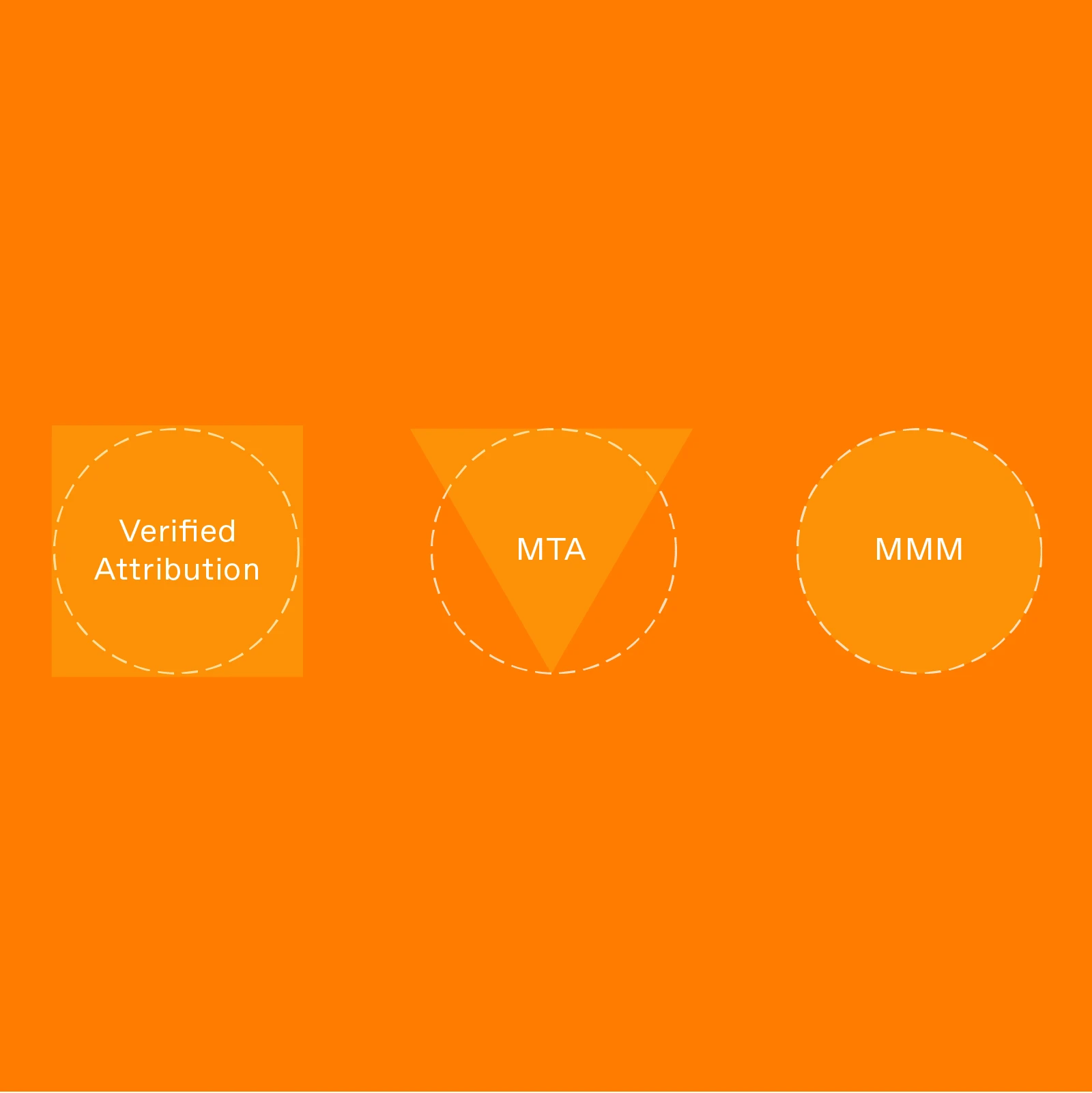
How Tatari’s Measurement Partners Help Prove TV’s Impact
When it comes to TV advertising, measurement is crucial. But it’s also complicated. While some newly minted TV advertising platforms eagerly promise sales, conversions, and a whole litany of “guaranteed outcomes”, the reality is that TV measurement requires expertise and a deep understanding of what the data actually represents.
We believe advertisers deserve more than vague claims or black-box attribution models. And while we believe our measurement is really sound, we encourage our clients to double- and triple-check the data against their own tests. That’s why we’ve built a robust and flexible measurement ecosystem, teaming up with best-in-class measurement providers, to give our clients a clear, accurate view of performance.
These partnerships are not just checkboxes or logos we drop on a slide (though we do happily feature them on our slides!). Each plays a specific role in helping our clients understand what’s working, why it’s working, and how to make it work even harder.
Measurement Isn’t One-Size-Fits-All
We understand marketers have different objectives and distinct goals, from brand building to performance. That’s why we make sure to partner with a diverse mix of measurement experts. Some help measure incrementality. Others quantify brand lift. Some focus on geo-based testing. What they all have in common is that they bring clarity to a space that’s often confusing to navigate and hard to determine if what you’re doing is truly working.
Let’s take a look at some of the key measurement methodologies shaping the TV industry today and the partners we work with to help quantify these measurement goals.
Media Mix Models (MMM)
MMM uses multivariate regression to determine the relationships among the dependent variable, such as sales or engagements, and the independent variables, such as ad spend across channels. Because it captures both the immediate and long-term effects of offline activities without the need for sophisticated data integrations or IP-level data, many marketers turn to MMM to make more informed decisions about their marketing strategy. MMM is a particularly big investment, so we recommend 7 essential factors to consider when evaluating a potential MMM partner.
“Measurement shouldn’t dwell on the past—it should drive your next move. Keen quantifies the incremental financial impact of full-funnel marketing, showing how TV fuels growth and boosts performance across channels through interaction effects. It tells you exactly how much to spend—by channel, by week—to hit the growth targets that matter in a rapidly evolving landscape.”
-Jesse Math, VP, Strategic Partnerships, Keen
Data Sources:
Aggregated sales/conversions, spend/impressions by marketing channel, promotions/other events
Approach:
Top-down, observational
Outputs:
Response contribution by marketing channel, CPA/ROAS by channel, channel-level diminishing returns curves
“Measured replaces correlation-based TV models with a causal approach, integrating incrementality testing into MMM to reveal TV’s true impact on business outcomes.”
-Trevor Testwuide, CEO and & Co-Founder, Measured
“Where we have weekly, DMA-level data with fast turnaround like we get from Tatari, we can use automation and machine learning to turn around MMMs including TV faster than ever, as fast as 5 weeks from when the ad ran. That’s a game changer for our clients because it’s fresh enough to act on”.
-Ross Link, CEO, Marketing Attribution
Our MMM partners include Keen, Measured, Marketing Attribution, and LiftLab, among others.
Multi-Touch Attribution (MTA)
MTA collects individual user-level data for addressable (trackable) media and conversion events to determine the impact each media event has on a customer's path to conversion. This allows marketers to optimize campaigns in near real-time by understanding which channels, creatives, and sequences are most effective in driving results.
“Because Northbeam models the full customer journey, we can attribute incremental lift from TV to specific metrics like MER or iROAS, even when that impact occurs outside traditional last-click windows. This gives performance marketers a clearer view of how upper-funnel investments like TV are driving lower-funnel actions, helping them optimize cross-channel spend with confidence.”
-Austin Harrison, CEO, Northbeam
Data Sources:
Touchpoint-level, device or user-level behavior/data
Approach:
Bottom-up, tactically driven observational study
Outputs:
Insights into the impact of marketing campaigns
“At Rockerbox, we don’t treat TV as an isolated channel or an afterthought. We integrate TV data directly into our multi-touch attribution models so marketers can see its actual contribution—alongside digital, out-of-home, and everything else. The goal is to move beyond last-click and finally give TV credit for the upper- and mid-funnel impact it drives.”
-Ron Jacobson, VP, General Manager, Rockerbox
Our MTA partners include Northbeam and Rockerbox, among others.
Design of Experiments (DOE)
DOE deals with planning, conducting, analyzing, and interpreting controlled tests to evaluate the impact from a change (or set of changes) to marketing strategy/mix (e.g., validate streaming TV has a significant level of lift).
“Growth teams want to know both what worked and how far they can efficiently scale spend to support growth targets. Tatari customers that run LiftLab have always used a 2 prong approach to measuring the incremental impact of TV: in the Agile Mix Model and Diminishing Returns Experiments. LiftLab experiments surpass simple geo-lift approaches while the mix model shows network incrementality to help optimize further.”
-John Wallace, Founder & CEO, LiftLab
Data Sources:
Historical sales/conversions, time-series for baseline construction, live sales/conversions during the test. Full DOE requires a comprehensive time-series, including select marketing channels, depending on objectives.
Approach:
Proactive, as it is focused on structured experiments, e.g., matched-market, scale testing, A/B split test, synthetic control
Outputs:
Depending on the test construct: estimated lift, potentially CPA/ROAS, diminishing marginal returns curves by channel
Our DOE partners include LiftLab and WorkMagic, among others.
Post Purchase Surveys
Survey-based methodologies capture in-purchase feedback, such as “How did you hear about us?”, and track responses over time as a proxy for brand awareness. These methods, often used by brand lift partners, help measure shifts in both aided and unaided awareness.
“TV is inherently complex to track, but if there's one thing we've seen, it's that it works in acquiring new customers. You should always use multiple attribution tools to triangulate your findings and not trust ‘one source of truth’. MMM, MTA, and Incrementality are all tools you should explore. To supplement these tools, ask your customers how they heard about you. In five minutes, you can find this out through a post-purchase survey. You can even ask them which ad they saw and which TV network they saw it on."
-Bar Bruhis, GM, KnoCommerce
Data Sources:
Customer survey response data
Approach:
Proactive
Outputs:
Customer insights, product feedback, satisfaction scores, dataset to attribute the source of brand lift
“Post-purchase surveys capture the 'dark funnel' that TV creates—when someone sees your ad during the game, then later searches your brand or types your URL directly, traditional attribution often misses that TV drove the conversion. By asking customers directly at the moment of highest engagement, we uncover the true impact of TV that would otherwise be misattributed to direct or organic channels.”
-Matt Bahr, CEO, Fairing
Our Survey partners include KnoCommerce and Fairing, among others.
Click here to learn more about our preferred technology partners.

Anna Koicheva
I lead partnerships at Tatari, curating connections across data, measurement, and creative solutions to help brands and media thrive together.
Related
7 Essential Considerations When Evaluating a Potential MMM Partner
Marketing Mix Models (MMM) helps companies measure their true marketing impact, but selecting the right partner requires careful evaluation. Here are key factors to consider in your MMM assessment.
Read more
How a DTC Brand Used Tatari's TV Advertising to Drive Revenue and Business Outcomes on Amazon
An eco-friendly cleaning product company found that TV advertising boosts Amazon sales, as confirmed by Tatari's analysis. This approach revealed that TV not only drives direct sales but also enhances customer acquisition across channels, underscoring its importance for DTC brands.
Read more
Moving Away from MTA and Toward a Better Model of TV Measurement
We discuss the complexities of TV measurement, highlighting flaws in approaches like Verified Attribution and advocating for a nuanced blend of methods, emphasizing the importance of embracing complexity in advertising attribution.
Read more


